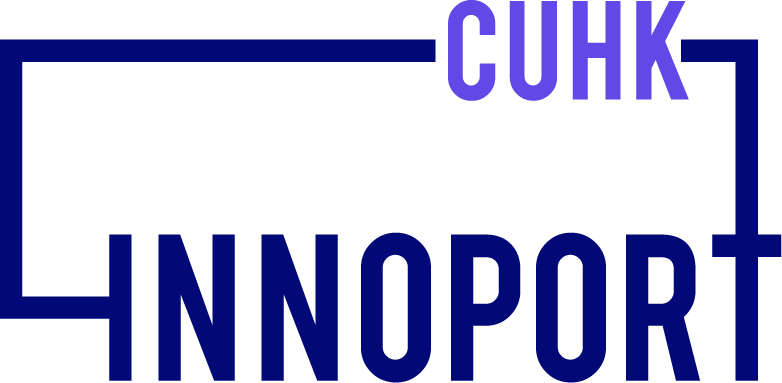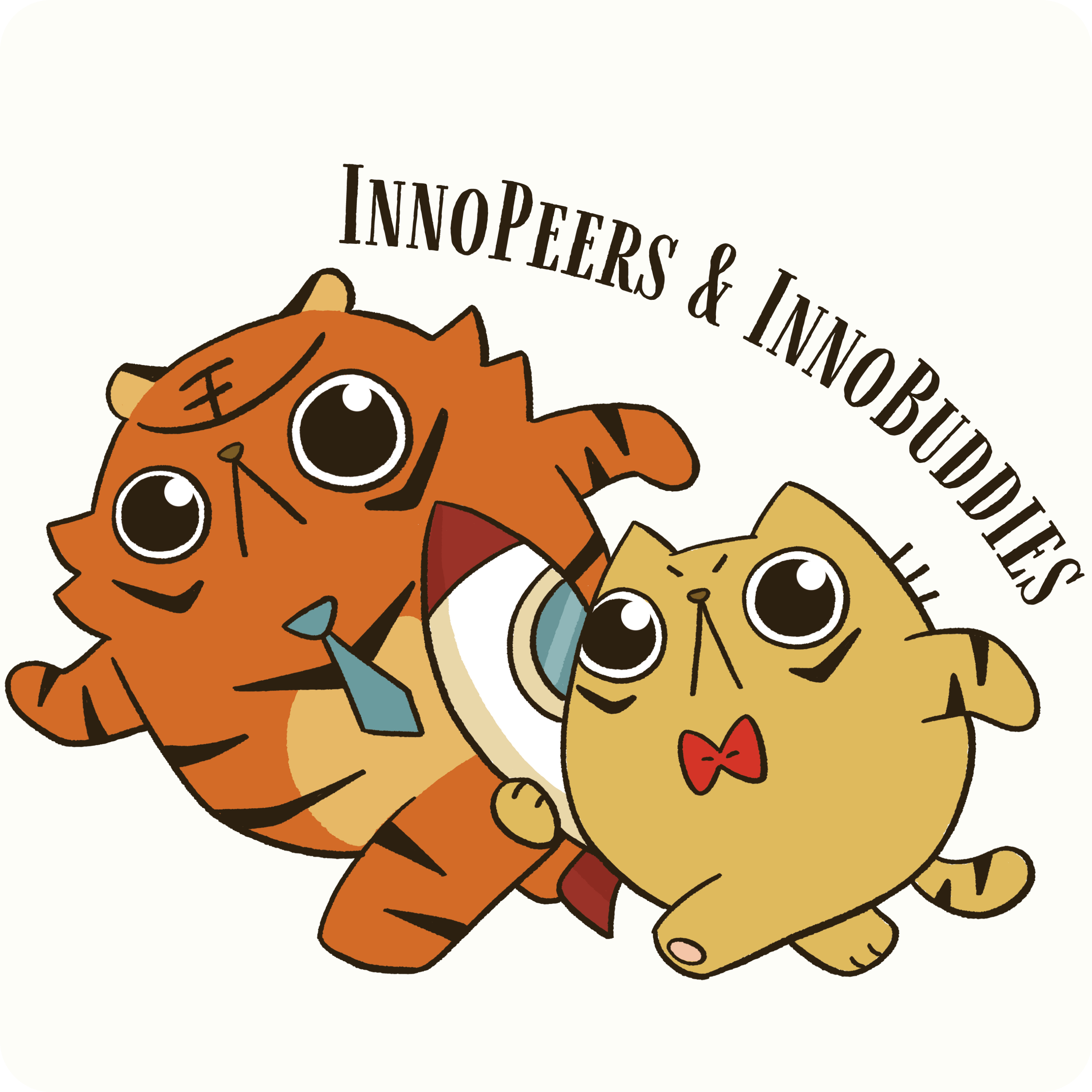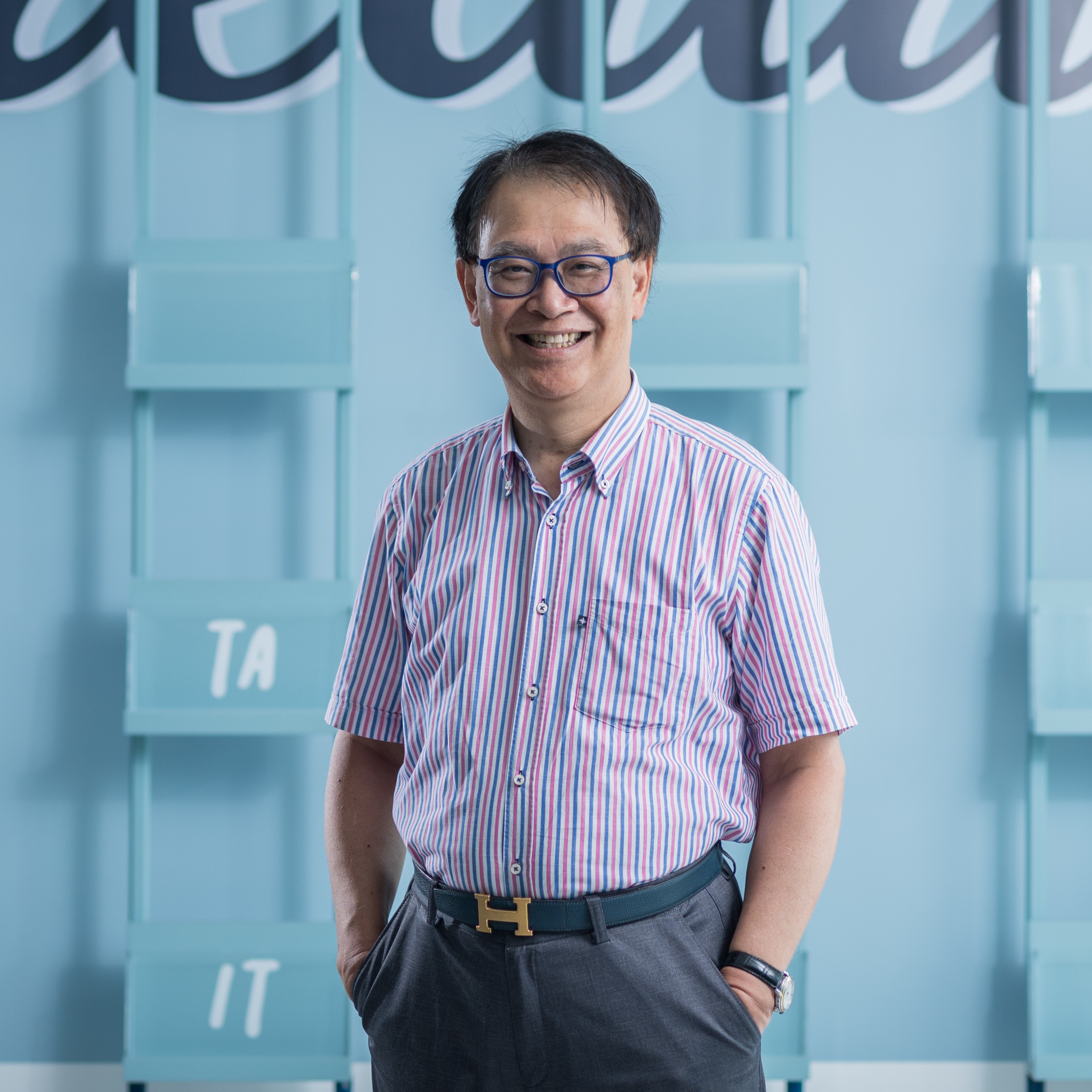In this world of climate risks, an environmental scientist devotes his 40-plus years of research experience into a sustainable eco-industry — a biotechnology that turns microalgae into “carbon-absorbing” amulets. Prof. Ho Kin Chung is the founder and director of Polar Research Institute of Hong Kong. He has visited the polar regions for 20 times, founded a business at the age of 60, and spent several millions of dollars to set up Hong Kong’s first Arctic science hub. Let’s hear his amazing stories, and see how he thinks about carbon finance in this world of money.
CUHK, the cradle of mountain & sea

“Those were happy days as a biology undergraduate in CUHK. Pat Sin Leng and Tolo Harbour in the vista, blooming flowers and rustling trees under the sun — the picturesque campus made me fall in love with nature. As a resident student of New Asia College, the philosophy of “harmony between man and nature” was imbued in every way of learning. Looking back now, it was very consistent with environmental science. Ecology is the science of understanding harmony between heaven, earth and man.”
“Back then, I often wandered the hillsides and got to see patches of red in Tolo Harbour. I thought it was some kind of pollution by red dye, but my seniors told me that it was red tide. Red tide is a formed by a single-celled micro-alga. I became interested in it.”
“At first, I thought that all microalgae are harmful, and that they occur when the water is polluted. When everyone says so, I try to think the other way — What if they can actually be useful? The more I studied it, the more obsessed I became. I then fell in love with studying microalgae and decided to get it on to purify pollutants. That’s how I went into environmental biology.”
Going the extra mile
After graduating from CUHK, Prof Ho went to study masters in environmental resources at the University of Salford, U.K. He then worked at Environmental Protection Department in Hong Kong for 10 years, while he did part-time PhD in Botany at the University of Hong Kong and completed the degree in 1991. After that he had taught in various tertiary institutions for 27 years. His research interests are environmental science, water resources, marine ecology, phytoplankton, and microalgae.
Having studied microalgae unceasingly for more than 40 years, Prof. Ho came to appreciate their merits instead of detriments. “The beauty of micro-algae is revealed under the microscope. The formation and structure are alluring — genuine wonderful works of nature. The word ‘pollution’ is very subjective. A red tide occurs when there are pollutants, killing marine life and damaging the economy. Hence, we think it is harmful. Scientists should think out of the box. I tried to put microalgae in fish beds, rivers and streams, and added protein to develop them into fish feed. In this way microalgae became useful.”


“Environmental issues at heart depend how we respond or evaluate them. Trashes are misplaced resources. They can generate income if we recycle them, but are useless in the landfill. Every coin has two sides — the spirit of science is to consider all possibilities.”
“I meant to retire at the age of 60, but I did not stop there. In light of imminent climate crisis, I pondered if my 40-plus years of research in microalgae might do some good. So instead of retirement I decided to go the extra mile and founded a business. I hope to apply the fruits of my research to practical use, and pass all my experience and passion to the younger generation.”
Scientist in the business world
Despite the passion, the abyss between ideal and reality compelled Prof Ho to rethink strategies for teaching and entrepreneurship.
“In terms of money, teaching staff enjoy stable salary growth. Work culture is vested in seeking truth and knowledge. Starting a business is another story. We will have to put social benefits first. The whole team looks up to you to pay their bills. It’s stressful! I know that teaching and entrepreneurship are not at odds with each other. I just need a way to make them work together.”
“Sustainability is the key to business. Return of investment should contribute to the society too. Environmental industry should have public benefit at local and global levels. Economy, society and environment should be considered altogether — this is my belief in entrepreneurship to promote sustainability.”
Prof. Ho aims at having the company go listed in 5 years. “I wish that the revenues of the company can be invested in the society. As the company grows, we will be able to make bigger impacts to the world. Environmental pollution around the world, social disparity between the rich and the poor, lack of social productivity in Hong Kong, frustration among young people about the future and so on are problems that, as a scholar, educator and scientist, I am obliged to solve.”
“To be honest, starting a business at my age is really not about making a fortune. I have only one passion, that is to help young people to thrive on the road of entrepreneurship.”
“We invest in each other”

Prof Ho’s team is interdisciplinary and intergenerational. From “Generation Y” millennials to post-60s, members are from diverse backgrounds of of technology, finance, business management, and energy engineering.
How do they view Prof Ho? Ho chuckles, “I give them chances to scold me!” All laugh. The team really gets along well.
Prof Ho believes that congeniality puts together a good entrepreneurial team in which everyone gets along with each other, goes for the same dream, speaks out their minds, and shares the joy. “I am chatty and I like to talk about everything, from politics, astronomy, geography, biochemistry, finance to anything else. I also enjoy good food. I love Shunde cuisine. Every time we have a meeting, we go yumcha to enjoy my hometown dishes! We attend events, get on with the vibes and expand the circle of friends together. This is good for team building and for future development of the company. I often say that I want to visit the Antarctic and Arctic, go hiking and traveling, and I bring along my colleagues. We are like a family.”
Among them, Nancy has been an ESG fund specialist for many years. She shares her experience in cooperating with scientists for the first time, “When I explain ESG to listed companies as a fund manager more than 10 years ago, they would transfer me between departments. No one would pay attention. I am glad that many people are in environmental protection now, but there is still a lot of “green washing” instead of actually doing practical things to reduce carbon and achieve circular economy.”
“Prof Ho’s projects are different — he really makes things work to steer sustainable development that benefits the world. These are also business opportunities. Microalgae can eat pollutants, and produce renewable energy such as biofuel and biomass. The world need these projects. That’s why I joined his team. We have to think strategically how to connect the products with market needs in carbon credit.”
The right time,right place and right people
“My journey in innovation and technology in Hong Kong is largely bitter. I failed 4 times in fund applications. The first application was submitted at a time innovation and technology had yet to catch on and policies immature. I was only informed of the failed application a year after the submission. Much time was wasted. At the second application I submitted all required data and documents, yet I was asked to prove the actual application of the project in Hong Kong. When I applied again, I submitted also a letter of support from a government department. Ironically they rejected the application, saying that I should ask for funds from that government department directly as since I have got their support. At the fourth attempt, after all reviews, I was rejected again the day before result announcement as the secretariat checked that my company was a charity instead of a company — charity was not eligible for their funding.”
“It takes the right time, right place and right people for good things to happen. I don’t complain. I just hope that all sectors in Hong Kong can do better. Later I received a lot of support in mainland China. My proposal was reviewed by an expert group, and comments were returned in a short period of time, not kicking me to other departments. The application mechanism in China in this regard is an electronic one-stop service. Once an application is submitted, seven departments will review it together. No matter what the result will be, it only take 3 weeks for the panel to decide on the allocation of funds.”

“By chance, I was invited to present a water quality improvement proposal to Shunde District, in Foshan City, my hometown. The city’s future development goal was to “prosper with water”. In mainland China, I found that local officers often have strong sense of belonging to their home city, town or village. They felt that I could dignify my hometown. I hence got the opportunity to do what I was rejected in Hong Kong, had it completed in China in 8 months.”
People in Foshan gave me this advice. “ ‘In fact, many people in China are familiar with the basics of algae cultivation. Even if you apply for a patent in the future, it will still be difficult to prevent others from entering the market to compete with you. Since Hong Kong is itself a brand, and you are from Hong Kong, we are happy to support you if you give us a sample.’ So I returned to Hong Kong to start a company, built a small ‘demonstration unit’, and entered the China market.”
Lessons from a sesame bun
“I can compare Innovation and technology in Hong Kong to a sesame bun. We cannot rely on a grain of sesame to fill our stomach. But a bun without sesame is not a sesame bun.”
Prof Ho thinks that Hong Kong cannot leave out China to develop innovation and technology. “Innovation and technology industry in Hong Kong requires large investments. Costs are high, yet the market is small. Hong Kong’s advantages are talents, vitality, international vision, and financial services. For example, to purify sewage with microalgae, Hong Kong may only offer 10 hectares of fish ponds. But in Shunde in China alone, the area available can be a hundred times more, not to mention the whole of China. If you close the deal, you don’t have to worry about money for the rest of your life.”
“The segregation of Hong Kong from the other side of Shenzhen River is the culprit of anxiety and anger of many young people. In terms of geographical conditions, the spaces for living, business and recreation are limited. China provides many special privileges to young people and entrepreneurs from Hong Kong. While youths need to resort to light public housing, Shenzhen provides “talented housing” to attract talents, and enjoy the life of the middle class in Hong Kong on cheap rent. Although the wages are not high, the actual quality of life is beyond that of Hong Kong.”
Polar adventures


Prof Ho’s core research is inseparable from water quality and algae, which brought him all the way to the Arctic and Antarctic. “The polar regions are nature’s mysteries, full of opportunities and creativity. I saw the vastness of nature and insignificance of human beings. I became humble and learned to adapt, which is important for entrepreneurship and personal growth.”
“No matter you are a scientist or crew member, you become a philosopher or artist after travelling to the polar regions. Why is that? You are entirely surrounded by natural beauty full of wonderful and interesting things. They touch your soul and you are inspired to express your feelings in poems and songs. I always take photos of inspirations with my camera. Every photo is an exhibition work.”
“Why do I leave the comforts in Hong Kong to venture the perils of the polar wilderness? In the polar regions, one may die of natural disasters and dangers any time. If unfortunately I lose my life, how will others evaluate me, and how will I evaluate my life? What is the meaning of life? When I feel lonely here, I will think of my friends in Hong Kong. A lot of sentiments are stirred up. Come to think of it, I become a philosopher again!”
“My arctic trips usually last for two weeks. It takes 3 days for international travel. 10 days is enough for me to see what I have to. Antarctica is further away as the flight times are long. A 15-day to 3-week trip is good enough. Due to oblique solar angles in the polar regions, you pretty much lose the sense of time here. It’s either broad daylight or long nights. Sleep and eat as you may, and you get to concentrate on your work as there’s no internet — what normally takes you a week to do in Hong Kong, you finish it in 2 days. There is a lot of time to enjoy the tranquility and think about life. “
Polar research is not package tour
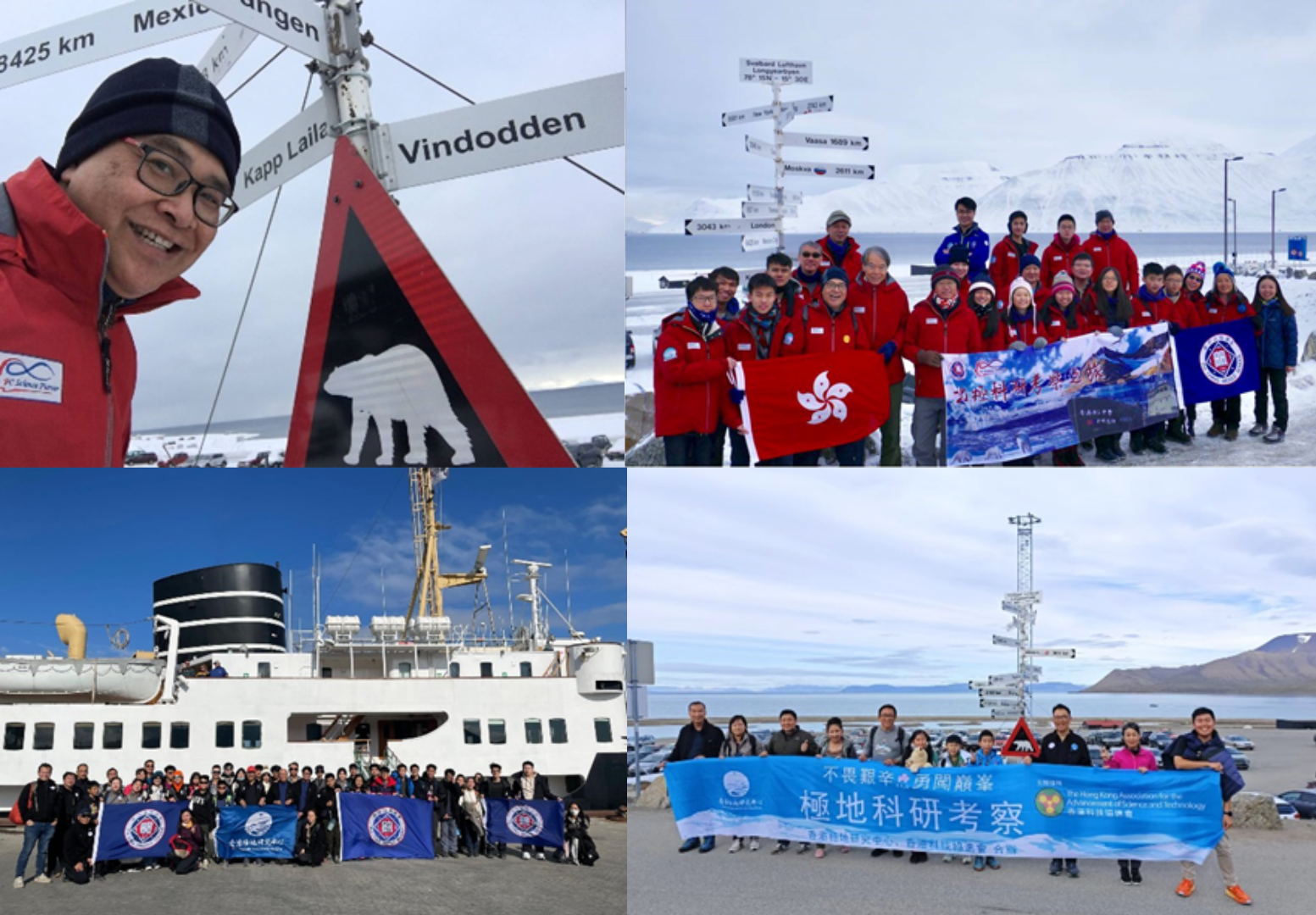
How much does it cost to go to the polar regions? It turns out that it’s cheaper to visit the Arctic than the Antarctic. “The average cost for an Arctic trip is around HKD10,000 per day, which covers air tickets, food, accommodation and local transportation. So it will be HKD100,000 for 10 days. Since a number of countries and cultures are relatively close to or inside the Arctic Circle, for example, historically the Vikings, and today the Inuits and people in the Nordic countries, Canada and Russia had started exploring the Arctic region early, so there are a lot more support here.”
“The cost will double for Antarctica, that is, around HKD200,000. Antarctica is a deserted continent itself. One has to go on an expedition vessel through the devilish westerly belt of Drake Passage with waves as high as 15m. Be prepared to embrace the turbulent waves and wind for 2 weeks. It’s not easy to replenish or organise teams either.”
Prof. Ho emphasises, “My polar trips are not package tours. They are for teaching and research, and not check-in tags. It’s a meaningless increase of carbon footprint if you do not go for the right purpose. Even if you know nothing in scientific research, you can still learn from me and be a citizen scientist. In fact, every person can contribute in an expedition. Scientists do not conduct scientific research by themselves only. They also need people to help move machines, copy data, and assist in statistics. I can teach everyone the knowledge of nature, which is also a kind of contribution.”
“I hope to develop a fish-algae-vegetable symbiosis system to turn my research in microalgae into an industry and support agricultural development. If I can obtain water quality elements that are resistant to low temperature and extreme environments in the Arctic and Antarctic, and put them in China to flourish, I believe the impact will be even greater.”
The ocean is Prof. Ho’s inspiration in scientific research, which he strives to protect and sustain. He believes that the further one goes, the wider one sees. He hopes that CUHKers will care about and protect this beautiful land, go beyond Hong Kong and venture out into the world to achieve high.
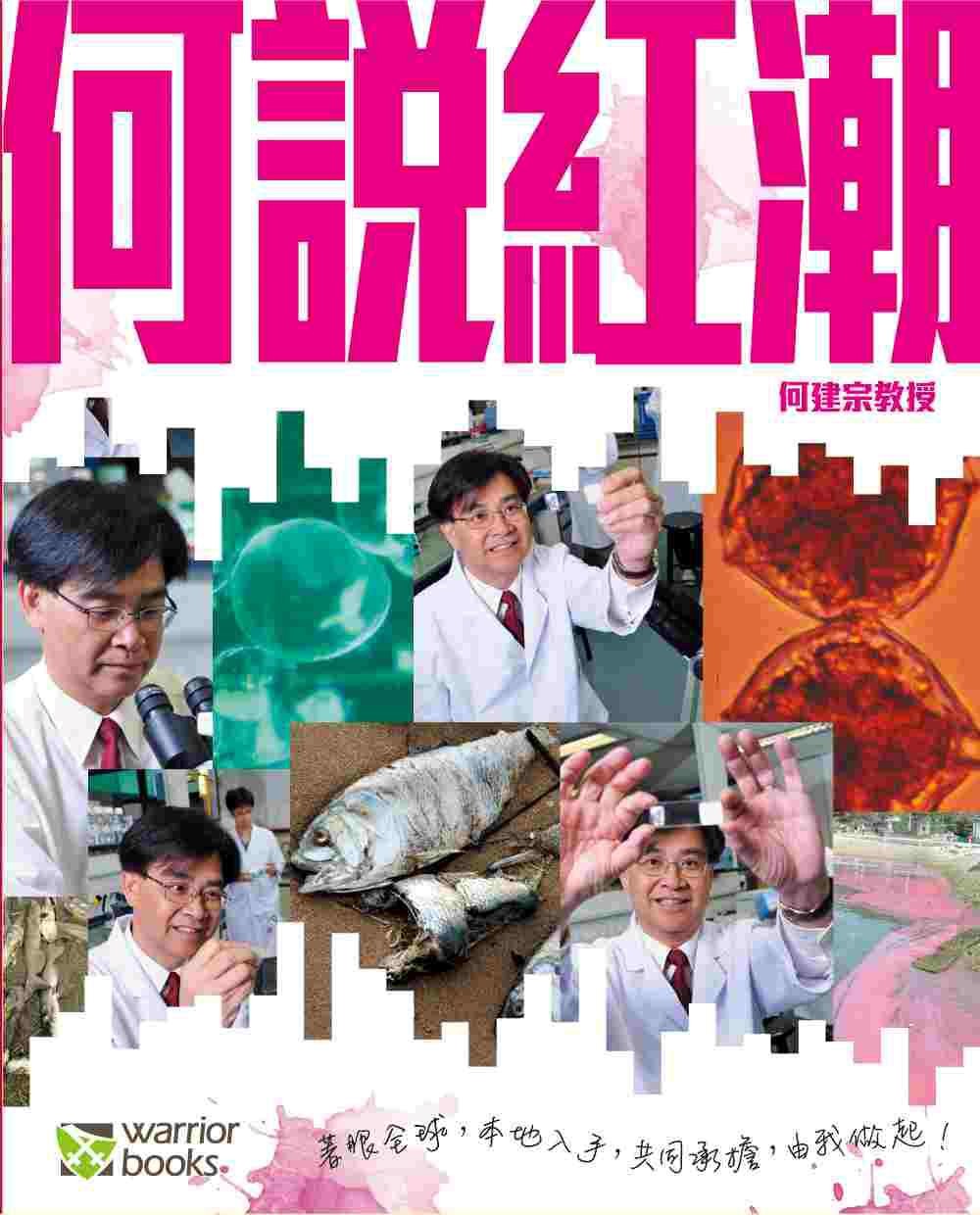
Food for thought
Some people leads a fulfilling life. Some develop multiple interests. I am a scientist who like to write essays and poems. I seem to be versatile. Yet everyone has 24 hours only. How to live a fuller life than others? The answer is time management. The most important thing is to have a clear goal and life direction. Just like sailing, you will save yourself from going the wrong way and get to know the different islands on the way. What are the characteristics of the islands? What supply will you need? Connect these loose ends and plan well, so that you can accomplish 5 things when others do one.
Having a goal motivates you to set plans, and attain the perseverance, willpower, and a strong body. If you get tired easily with just doing a little, and it is difficult for you to carry through. The training that these polar studies have brought me has made me strong to encounter difficulties and willing to overcome them.
Chinese Text: Alice Fong@ORKTS
Translation: Miriam Lee

